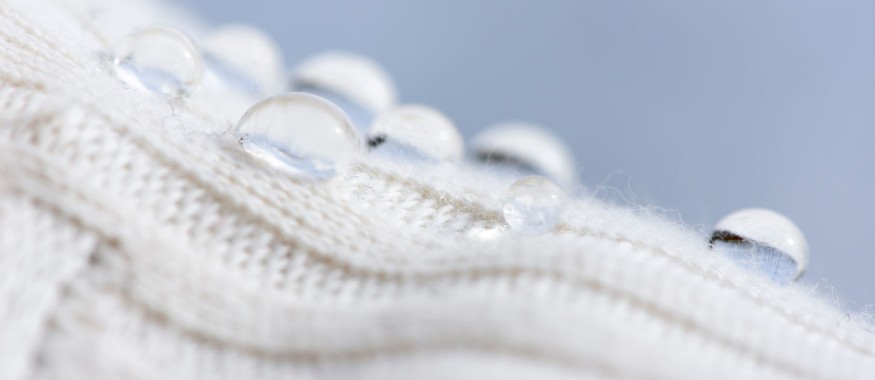
The environment has been making its concerns more known to people and one of these is the impact of textiles and clothing on the environment. Conventional methods of fabric production, particularly those special waterproof ones, result to residual contents of chemicals in the final product. When humans use them, toxic chemicals disperse into the air or are absorbed by their bodies through the skin. This becomes an even bigger threat not only to the environment but also to our health as individuals.
In a recent research published in ScienceDirect, researchers from Aalto University aimed to address this issue. With the use of carnauba wax from Brazilian palm tree leaves, they have developed a new, more environmentally friendly way of making clothing water resistant. Fortunately, they were able to do this without negatively affecting the breathability of the material.
To do this, the team thawed the wax, which was allowed to decompose in water, then producing anionic particles similar to cellulose fibers. Having the same charge, the anionic particles will not be able to bind with cellulose, so a cationic buffer like polylysine was ideal for this study since it is a natural protein.
However, Aalto University PhD student Nina Forsman clarified that due to some constraints, the team used cationic starch. "Polylysine is very expensive so in our current study, it's been substituted with a much cheaper, cationic starch that's already commercially available," she said.
With the difference in properties between the polylysine and the cationic starch, the researchers used a mixture of two layers of starch and two wax particles, enough to make the garment effectively waterproof.
To test their product, the team compared the breathability of textiles coated with their natural wax with those coated with commercially available chemicals. From this, they claimed that the textiles coated with natural wax retained their breathability, while those coated with commercial wax had observably reduced breathability.
Forsman explained how the roughness of the garment also affects the efficiency of the product. "We tested the coating on different textile materials: viscose, tencel, cotton, hemp and cotton knitwear. We found that the surface roughness of textiles affects how well it repels water - the rougher the surface, the better. This is because, on a rough surface, water droplets contact the textile surface in a smaller area," she said.

On the other hand, the researchers have also observed that the wax coating is not resistant enough to laundry detergents, which means that the product is most suitable for those items that are not frequently washed, such as coats and jackets.
Just like other types of coating, the natural wax coating can be sprayed or brushed onto the material. Alternatively, the material can also be dipped into the coating. The last method stated was found to be most effective for smaller pieces of clothing, while spraying and brushing were thought to be more suitable for larger ones.
During the manufacturing stage, the coating could be applied just when color is added, towards the end of production. Future research, as Aalto University recommends, would be focused on how the product can be used by consumers, who can apply the coating on their clothes after every wash.










